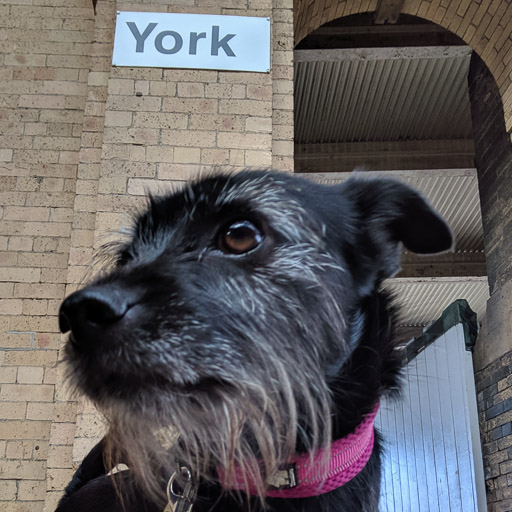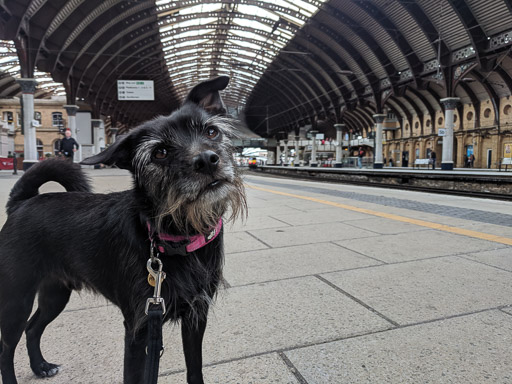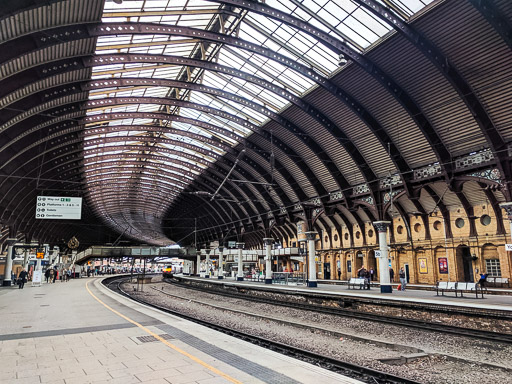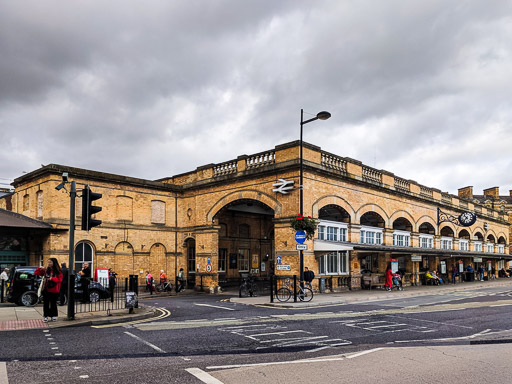York Railway Station
Rudy has been on two trains at York, firstly on the 2nd of September 2019 and then on the 5th of September 2019.
Although Rudy has been on trains at
York railway station is a principal stop on the East Coast Main Line (ECML) serving the cathedral city of York, North Yorkshire, England. It is 188 miles 40 chains (303.4 km) north of London King's Cross and, on the main line, it is situated between Doncaster to the south and Thirsk to the north. As of June 2018, the station is operated by London North Eastern Railway (LNER). It is the busiest station in North Yorkshire, the third busiest in Yorkshire & the Humber and the sixth busiest in Northern England, as well as being the busiest intermediate station on the East Coast Main Line. In Britain's 100 Best Railway Stations by Simon Jenkins, the station was one of only ten to be awarded five stars.
The present York station was built during the 1870s after it had become clear that the old station, which could not facilitate through traffic due to its positioning, was a hindrance to long distance express services along what is now referred to as the ECML. Designed by the North Eastern Railway architects Thomas Prosser and William Peachey and built by Lucas Brothers, the station was built to be expansive and well-furnished from the onset, complete with a distinctive curved train shed. Upon its opening on 25 June 1877, it was the largest railway station in the world, possessing 13 platforms along with various amenities, including a dedicated hotel (now The Principal York). Various additional facilities, from lengthened platforms to additional passenger facilities such as tea sheds, would be built subsequently.
The station took extensive damage from German bombers during the Second World War, resulting in both deaths and injuries amongst the staff. Repairs to the station were completed in 1947. Journey times between York and other destinations along the ECML were slashed following the introduction of British Rail Class 55 Deltic locomotives and InterCity 125 high speed trains. During the late 1980s, extensive changes were made to the signalling and track layout through and around the station as a part of the wider electrification of the ECML. These works facilitated the use of electric traction, such as the InterCity 225, at York station for the first time. Further improvements to the station have continued following the privatisation of British Rail, including new control facilities, additional retail units, redesigned approaches and track layout changes.
York station is a key junction approximately halfway between London and Edinburgh. It is approximately five miles (eight kilometres) north of the point where the Cross Country and TransPennine Express routes via Leeds join the main line, connecting Scotland and the North East, North West, Midlands and southern England. The junction was historically a major site for rolling stock manufacture, maintenance and repair.
Wikipedia


